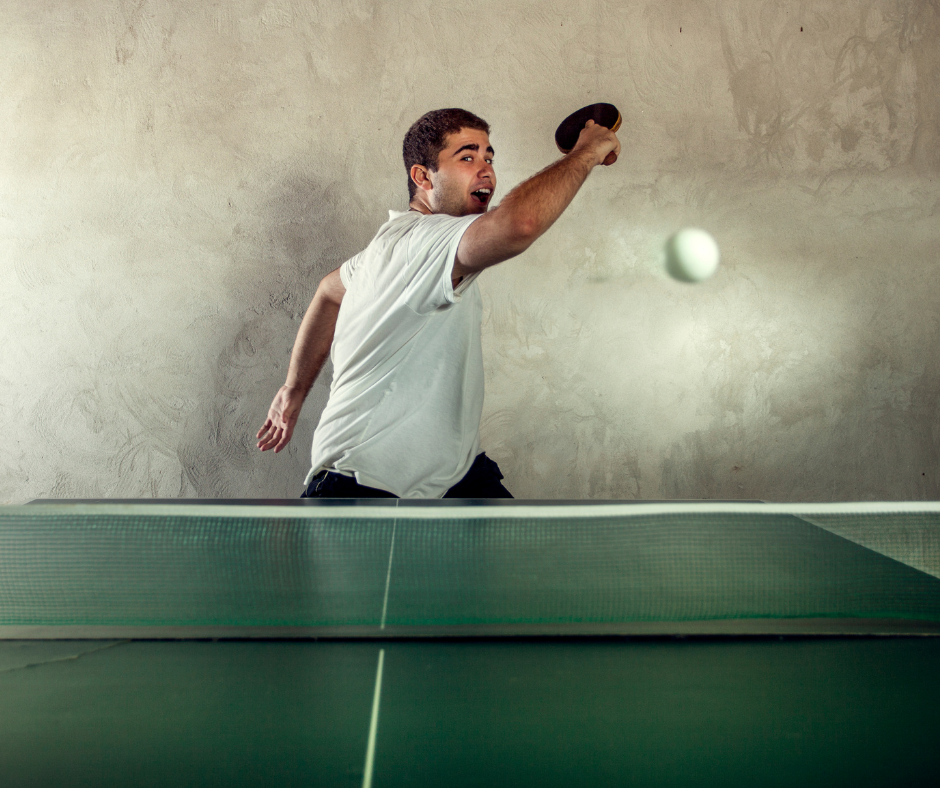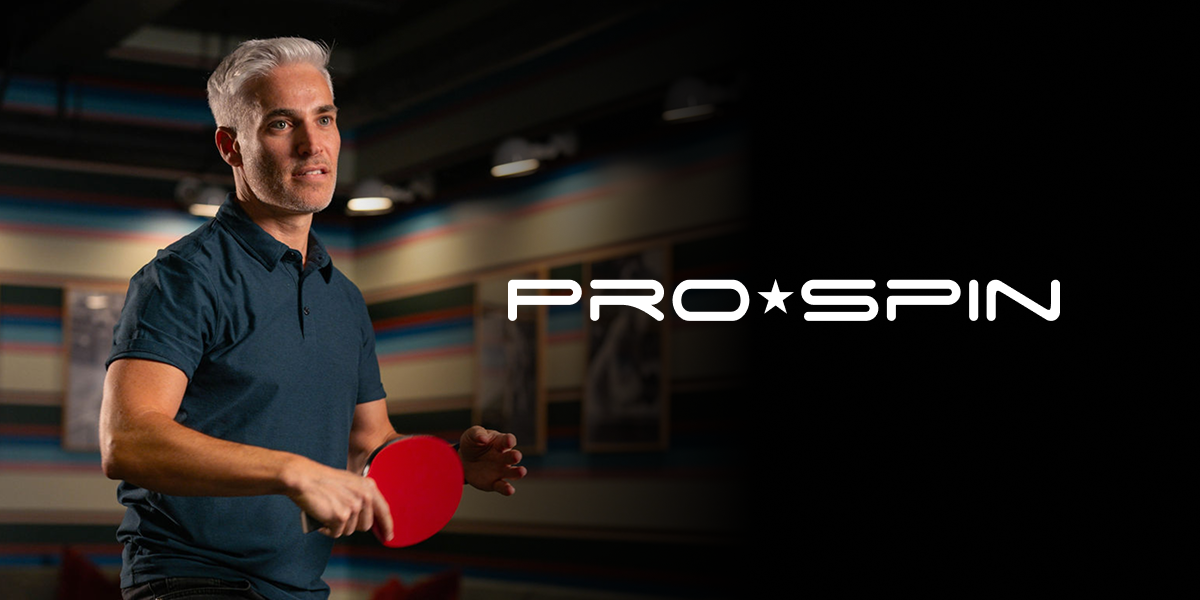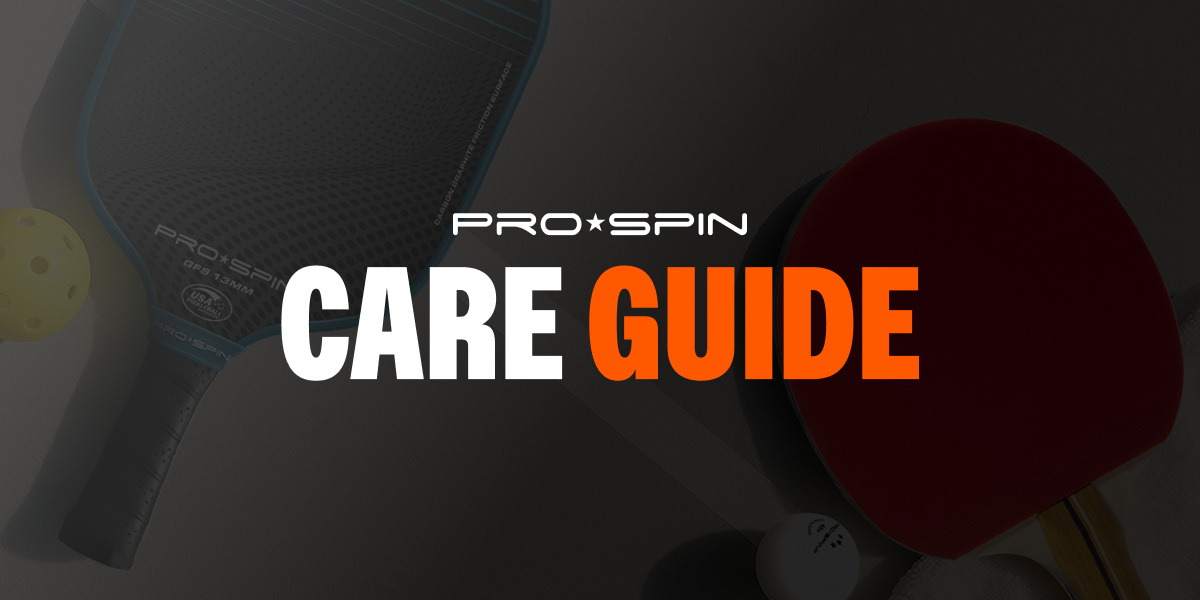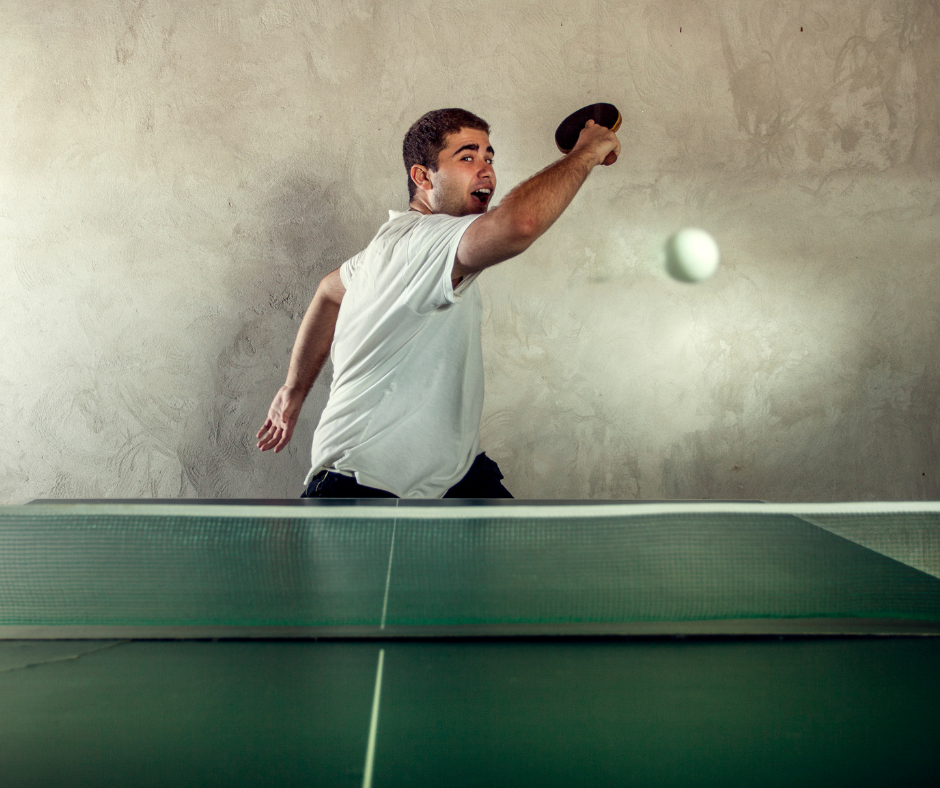How to Choose the Best Ping Pong Paddle (for Your Skill Level)

Have you been playing for a while and not getting any better? Are you struggling to return your friend’s patented spin serve? Are balls flying all over the place every time you take a shot? If you answered yes to any of these questions, it might be time for a better paddle.
Like any sport, table tennis requires a decent amount of skill to play well. Sure, luck can help you win a point here or there, but ultimately, it’s your skills that will get you playing with more consistency in your game. Another thing that can help you perform is good gear. After all, playing with any old paddle that you find in your basement is only going to take you so far! If you want to start winning more games, you’re going to need a proper paddle.
In this article, we’re going to walk through what to look for in a ping pong paddle and how to choose the right one for you.
How to Choose a Ping Pong Paddle
Before we go into specific rackets, it may help to understand the different parts of the racket and how each affects your game. The four main components are as follows:
- The handle – the part that you hold
- The blade – the wooden section that you hit the ball with
- The sponge – the squishy layer between the blade and the top sheet
- The top sheet – the grippy outer layer that makes contact with the ball
Ping Pong Paddle Handles
Before we go too far into talking about handles, it’s important to talk about how you hold the paddle (your grip). There are two main grips in table tennis: shakehand and penhold.
Shakehand grip is called this because your hand looks like you are shaking someone’s hand. This is the most common grip, so there are a few different options when it comes to handles.


- Straight handles – These don’t really need much explaining. They’re straight from the bottom to the top. Some players prefer this because it is easier for them to make grip adjustments mid-point. Others just simply like the way it feels.
- Concave handles – These are our personal favorites. The handle flares out towards the bottom making it easier to keep a hold of. This also allows the player to hold the paddle a bit looser making it easier to produce spin.
- Anatomic handles – These aren’t as common as the other two and have a particularly different look with a bulge in the middle of the handle. Players with larger hands tend to find this type of handle more comfortable, so if you fall into that category, this could be the handle for you.
Penhold grips are more often used by Asian-trained players and involve holding the paddle handle similarly to how someone holds a pen with the handle between the thumb and forefinger. This is a bit of a niche grip, so there is only one handle option for penholders.

- Penhold handle – These handles are shorter to help accommodate the hand position of the penhold grip. It also features a gap where the rubber on the blade ends and the handle begins for added comfort. Blisters are no fun for anyone!
There is no right or wrong handle to choose from. It is largely up to each person’s preference. There’s nothing stopping a penhold player from using a standard handle. It’s all about what makes you feel good!
Ping Pong Paddle Blades
Most blades are made entirely out of wood, but some can feature carbon fiber as well. Typically, paddles will have between 5-7 layers/plies. As a general rule, the fewer layers the blade has, the more control it offers.
The reason wood is more common is because it provides a good feel for the ball. This helps you identify the quality of your shots. When you hit the ball just right in the sweet spot, your paddle will let you know.
In contrast, a blade featuring carbon fiber will increase speed and has a larger sweet spot, but you’ll get less feel. This is great in the hands of more skilled players, but for rookies, it can spell trouble. Remember, the name of the game is to get the ball onto the table. Too much speed can be a bad thing!
Our recommendation is to pick up an all-wood blade if you’re just starting out. If you’re a little further on your ping pong journey and are looking to add a bit of oomph to your game, consider giving a carbon racket a try.
Ping Pong Paddle Sponges
Table tennis rubbers feature two parts: the grippy top sheet and the squishy sponge. The sponge helps generate power and spin. Think of it as a spring. It compresses when you hit the ball and then it expands to propel the ball away.
Sponges come in different levels of hardness, but that isn’t something you need to worry about unless you’re competing at higher levels. What you should be taking note of is sponge thickness. Sponges are available anywhere between 1.2mm to 2.5mm. In general, the thicker the sponge, the faster the racket plays and the more spin it can generate. Players will usually find a certain thickness that suits their style of play and stick close to it.
We recommend players start with a 1.8mm sponge and adjust as they develop their skills and play style.
Ping Pong Top Sheets
The top sheet is the star of the show when it comes to generating spin. There are two different styles of top sheets: ones that feature the pimples on the outside, and ones that have them hidden under a smooth outer layer.
We recommend sticking with a smooth top sheet, also known as inverted. With these, the ball spins more like you would expect, so the ball won’t go pinging off in random directions.
Consider Ping Pong Paddle Ratings
Even when you take all this info and advice together, it can still be difficult to figure out which paddle is a good fit for your game. Each player will have their own strengths and weaknesses as well as their preferences and play style. Fortunately, many brands (including ourselves!) provide ratings for their paddles so you know what the sum of the parts is. Usually, this is a score of 1 to 10 for Control, Spin, and Speed (although sometimes larger scales are used).
- Control refers to the ability to keep the ball on the table and maintain accuracy. The more Spin and Speed a paddle has, the harder it is to control.
- Spin relates to how much the paddle can rotate the ball. This is particularly important for serving and other wicked spin shots.
- Speed is the pace the paddle can generate. The higher the rating, the less effort you need to put into your swing to generate faster shots.
The Best Ping Pong Paddle for Beginners
If you’re just starting your ping pong journey, you’re going to be developing your style and improving your skills quite rapidly. As such, you will want a paddle that is responsive and manageable. You wouldn’t give a new driver the keys to a Lambo and the same logic applies here. A well-made paddle with high control and moderate spin and speed is a perfect place to start. Lucky for you, Pro-Spin has something that fits that bill exactly!
High-Performance Table Tennis Racket

These paddles are ideal for new players just dipping their toes into the sport. Featuring a concave handle with 7-layers of premium wood, you get more power than most beginner rackets, but can still precisely place the ball where you want to. This paddle easily beats out similar rackets at this price point, which can be cheaply made and won’t provide the feel that you need to play at your best. The 1.8mm sponge compliments an all-round play style and the top sheet offers enough grip to add some spin to your shots.
To top it all off, we include our 3-Star Training Balls, a convenient carrying case, and a 1-year warranty with each set. For those just looking for a single racket, we got you covered there too. You’ll be hard-pressed to find better value anywhere else. Believe us. We looked!
The Best Ping Pong Paddle for Intermediate to Advanced Players
For those who have a bit more experience under their belt, you’ll likely have developed a certain playstyle and may want to invest in a paddle that suits your skillset a bit more. Some players may opt for a paddle that focuses on a specific aspect of the game, such as spin, control, and speed. These rackets will have a much higher skill ceiling, but will require some ability on the user’s part to fully reach that potential. There are also paddles that take a more well-rounded approach that offer better spin, control, and speed than any starter paddle. If this is something that sounds appealing to you, let us introduce the Elite Series Carbon Table Tennis Racket
Elite Series Carbon Table Tennis Racket

The Pro-Spin Carbon Table Tennis Racket is the result of years of R&D with professional players and coaches. In our humble opinion, it could be exactly what you need to start taking on tougher competition.
These paddles are designed with a more aggressive, attack-oriented style of play. The carbon layers in the blade result in a much faster paddle with killer point-ending potential! It also features a 2.0mm sponge for more spin and speed making you both a faster and scarier opponent to face. Finally, the rubber top sheet is designed for control to round out the paddle making it the most innovative and advanced paddle we have to offer.
If you play frequently, but find your performance is stagnating with your current paddle, the Elite Series Carbon can help breathe new life into your game. We also sell this paddle with a penhold handle for players that utilize this grip.
The Best Place to Buy Table Tennis Paddles
The best place to purchase table tennis paddles is from a table tennis specialist. That’s us! But don’t take our word for it. We have over 5,000 reviews and have been featured in Men’s Health, Sports Illustrated, and more.
We take the painful guesswork out of choosing gear, providing top-quality products for you to use. Our mission is to maximize your enjoyment of ping pong and help you have fun and create more memorable moments.






